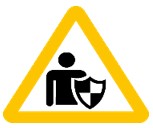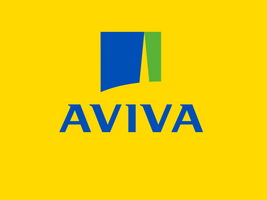Title Page
-
Site conducted
-
Conducted on
-
Prepared by
-
Additional Persons:
-
Location
Risk Category Standard - Security
Responsibilities
-
Who is the Risk Owner of this risk category?
-
Who is the Control Owner of the risk category?
-
Who is the Risk Executer of this risk category?
-
Who is the Task Executers of this risk category?
Competencies
-
Is the Risk Owner trained and competent to manage this risk category?
-
Is the Risk Control Owner trained and competent to manage this risk category?
-
Are the Risk Exacters trained and competent to manage this risk category?
-
Are the Task Executers trained and competent to manage this risk category?
Appointments
-
Is the Risk Owner appointed to conduct his/her duties? (WAH Planner, risk assessor.....)
-
Is the Risk Control Owner appointed to conduct his/her duties? (WAH Planner, risk assessor.....)
Risk Management Requirements
-
The security risk management approach comprises of prevention, protection, preparedness, response and recovery control measures that are established from the outside towards the inside of a restricted area.
-
Review security risk assessments as deemed necessary based on crime trends and statistics.
Fit-for-purpose and systematic implementation of control measures with due consideration to:
-
Compliance to in-country legislation
-
The restricted area’s location and topography
-
Adjacent or surrounding occupancy and socio-economic conditions
-
Proximity, capability and capacity of local law enforcement agencies and/or contractors
Define, maintain and operate reliable control measures:
-
Physical barriers e.g. fences, gates, locks, safes.
-
Technology barriers e.g. access control, CCTV, motion detectors, alarms systems.
-
Guarding, patrolling and response e.g. personnel, vehicles, drones, dogs.
-
Integrate, document and audit the installation, execution and utilisation of all control measures.
-
Ensure emergency response systems are in place to mitigate incidents.
Minimum Critical Controls
-
Define and establish boundaries around restricted areas including physical separation, barricading and signage.
-
Control movement in and out of the restricted areas with access control, permissions, rules and documentation.
-
Apply personal accountability to secure both own and company property.
-
Establish a response procedure including all relevant contact numbers
Define and Establish Boundries
-
Identify, select and integrate the appropriate technology (software and hardware) to enhance the functionality of the physical mechanisms or barriers e.g. Artificial intelligence (AI) capable cameras, alarm system including warning light, magnetic switches, motion sensors, panic activation and sirens.
Install fit-for-purpose physical mechanisms or barriers which consist of the appropriate materials of construction and proportions for the specific application. It includes any combination of the following:
-
Fences and walls: Concrete, steel and/or wire, barbed-wire, electrified, palisade and/or spikes, brick, concrete.
-
Doors, gates and/or windows: Glass, steel and/or wood – solid and/or hybrid, boom, burglar proofing, turnstile, wired or bulletproof glass.
-
Locks, safes and/or vaults: Cast iron and/or steel, combination locks, deadbolt and/or key.
-
Maintain all physical mechanisms or barriers as per specification to ensure the integrity of the mechanism or barrier.
-
Establish and create awareness about restricted areas by providing concise and visible information as well as warning signs.
Ensure the integrity of physical measures:
-
Maintenance (M).
-
Operability (O).
-
Reliability (R).
Verify and enforce access control to restricted areas:
-
Original identity document or passport.
-
Criminal record vetting for long-term and permanent deployment.
-
Successful completion of the site induction assessment.
-
Employer or host supervision for initial entries.
-
The right of admission is reserved.
-
Declaration of property entering and exiting the restricted area.
-
Indemnity clause, operating hours, prohibited activities, items and behaviours, alcohol screening and searching.
Guard and patrol the restricted areas:
-
Adequately resourced to execute processes.
-
Enable and empower officers to execute activities.
-
Execute to a minimum within the ambit of the requirements and information.
-
Act decisively and timeously to defects.
-
Provide the correct equipment, tools and vehicles.
Apply Personal Accountability
-
Be vigilant of your surroundings, always.
-
Secure your access credential/s, keys and passwords — present only as required.
-
Secure your personal and work belongings wherever you may be.
-
Avoid confrontation and conflict situations.
-
Report suspicious or dangerous behaviours or conditions immediately.













